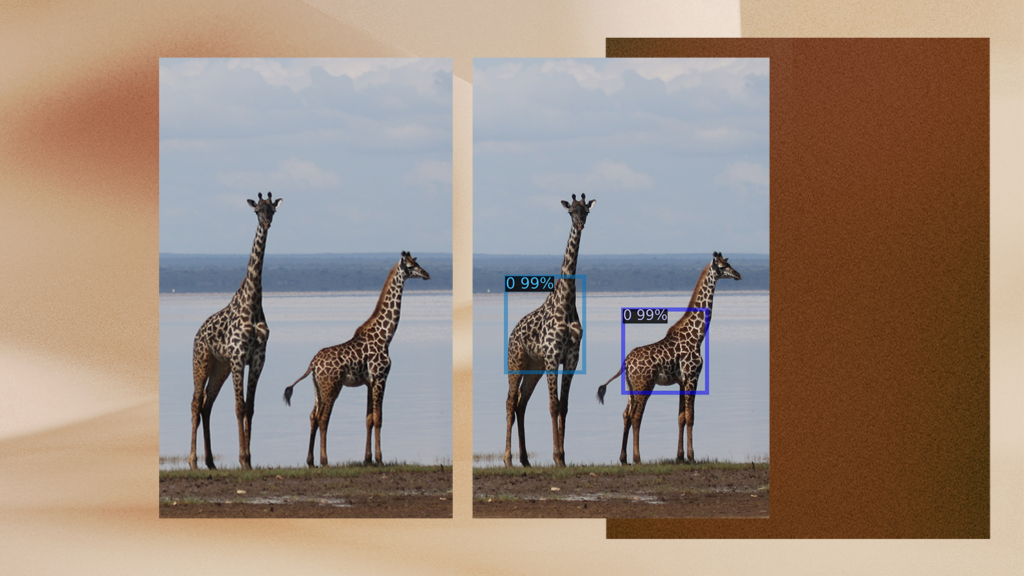Table of Contents
In 1956, a 23-year-old Canadian scientist named Dr. Anne Innis Dagg did something extraordinary: she traveled alone to South Africa to study giraffes in the wild—becoming the first Western researcher to do so. Her discovery was simple but profound: the pattern of spots on a giraffe is as unique as a fingerprint, allowing scientists to re-identify individual animals over time.
Today, nearly seventy years later, that insight is powering one of the most advanced AI conservation tools ever created.
We’re proud to announce the launch of GIRAFFE (Generalized Image-based Re-Identification using AI for Fauna Feature Extraction)—an open-source AI tool developed by Microsoft’s AI for Good Lab, in partnership with the Wild Nature Institute, to help conservationists track and protect Tanzania’s endangered giraffe population. Built over a decade of collaboration, this tool is already helping to provide critical insights for conservationists to help stabilize key giraffe populations in the region, and giraffes are just the beginning.
Why it matters
Giraffes are found only in Africa—and in Tanzania, their numbers have declined by more than 50% in the last 30 years. Adult females are often targeted by poachers, leaving populations vulnerable and fragmented. Conservationists need data to reverse this trend: survival rates, migration routes, reproduction patterns, and more. But gathering and analyzing that data has traditionally required enormous manual effort.
That’s where AI can help.
What GIRAFFE does
Our new tool—GIRAFFE—uses computer vision to identify individual giraffes based on their spot patterns, also facilitates automated individual annotations and dataset curation. It’s fast, scalable, and designed for real-world conservation:
- AI-Powered Recognition: Matches giraffes with over 90% accuracy, reaching 99% in many cases.
- End-to-End Workflow: Supports every step of the process, from photo uploads to expert review to seamless catalog updates.
- Accessible Design: A clean, user-friendly interface allows both scientists and field researchers to use it—no coding required.
- Scalable Infrastructure: Handles thousands of images quickly, processing each match in under two seconds.
- Open Source: Available now on GitHub, with tools for both technical and non-technical users.
Every time a giraffe is photographed—usually the right side, which serves as its “ID card”—the tool compares the image to a catalog and either identifies the individual or flags it for expert review. Each survey generates over 1,500 images; GIRAFFE turns what used to take days into minutes.
“Pattern matching software and computer vision has allowed us now to keep track of thousands of individual giraffes. We take photos of every giraffe we see, and we feed them into a pattern recognition software, which forms the basis of all of our data that we use to understand where they are doing well, and if they are not doing well, why—and we can develop effective conservation actions,” said Derek Lee and Monica Bond at Wild Nature Institute.”
A model for broader conservation
GIRAFFE’s architecture isn’t just for giraffes. It can be adapted for any species with distinctive visual patterns—zebras, tigers, whale sharks, and more. That’s the power of open science: we build once, and the benefits multiply.
We’re especially grateful to the Wild Nature Institute and the Masai Giraffe Conservation Project. Their tireless fieldwork, deep expertise, and shared commitment have made this progress possible.
At Microsoft, we believe that some of the world’s biggest challenges—climate, biodiversity, sustainability—require not only commitment, but collaboration. AI alone won’t save the giraffes. But in the hands of dedicated scientists, it can make a world of difference.
Let’s make sure the tallest land mammals on Earth still have a place to stand.


